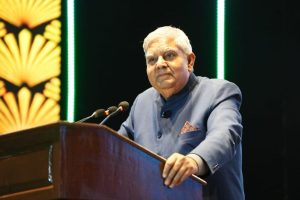The number of people caught in the grip of multidimensional poverty fell by about 415 million between 2005-06 and 2019-21, as per the global Multidimensional Poverty Index (MPI) released on Monday.
MPI, prepared by the United Nations Development Programme (UNDP) and the Oxford Poverty and Human Development Initiative (OPHI), assesses poverty by considering various deprivations experienced by people across health, education, and standard of living.
In roughly 15 years, the MPI value, the incidence of poverty, and deprivations among poor people as per the 10 MPI indicators more than halved. This reduction in the MPI value continued to be pro-poor in absolute terms. Rural areas saw the fastest reduction in MPI, as did the children.
Similarly, the poorest caste and religious groups saw the fastest absolute reduction from 2015/16 to 2019/21. Bihar, the poorest state in 2015/16, saw the fastest reduction in MPI value in absolute terms. The incidence of poverty in Bihar fell from 77.4 per cent in 2005/06 to 52.4 per cent in 2015/16 to 34.7 per cent in 2019/21.
Deprivations in sanitation, cooking fuel, and housing fell the most from 2015/16 to 2019/21.
Globally, the MPI data is based on Demographic and Health Surveys (DHS) and Multiple Indicators Cluster Surveys (MICS). The data used to estimate the 2022 global MPI values were gathered from household surveys across 111 countries, covering 6.1 billion people.
The report finds that 1.2 billion people live in acute multidimensional poverty – nearly twice the number of people when poverty is defined as living on less than $1.90 per day.
This year for the first time, the MPI reveals interlinkages: interlinked deprivations that affect the same person or household simultaneously in the form of deprivation bundles.
With more than 850 different combinations of the 10 deprivations, this analysis can guide policymakers on specific interventions that are meaningful for individuals and families experiencing poverty.
“With recession clouds on the horizon and debt gripping some 54 developing countries, we are seeing how tight government budgets are becoming even tighter — it is vital to leverage the power of cutting-edge data and analytics to understand where the biggest difference can be made with increasingly scarce resources,” argues Achim Steiner, UNDP Administrator.
“For example, this multidimensional analysis shows us that decarbonization and expanding access to clean energies will advance climate action -and is also critical for nearly 600 million multidimensionally poor people who still lack access to electricity and clean cooking fuel.”
Of the 81 countries with trend data, 68 have significantly reduced deprivations among poor people in five or more indicators during that period, with 46 countries reducing deprivations in eight or more indicators.
“India has shown great commitment and leadership in lifting people out of poverty, especially among the poorest in the country. The Sustainable Development Goal target 1.2 is for countries to reduce at least by half the proportion of men, women, and children of all ages living in poverty in all its dimensions by 2030. India’s progress shows that this goal is feasible, even at scale,” says Shoko Noda, Resident Representative, UNDP India.
Despite tremendous gains, India continues to have the largest number of poor people worldwide (228.9 million), and the ongoing task of ending poverty remains daunting. The most recent data for MPI were collected pre-pandemic, so the effects of COVID-19 and subsequent shocks on poverty in India cannot be assessed yet.
Children are still the poorest age group, with more than one in five children being poor, compared with around one in seven adults. This translates to 97 million poor children – more than the total number of poor people in any other country covered by the global MPI. West Bengal is the only state of the 10 poorest states in 2015/16 to move out of this category in 2019/2021.










